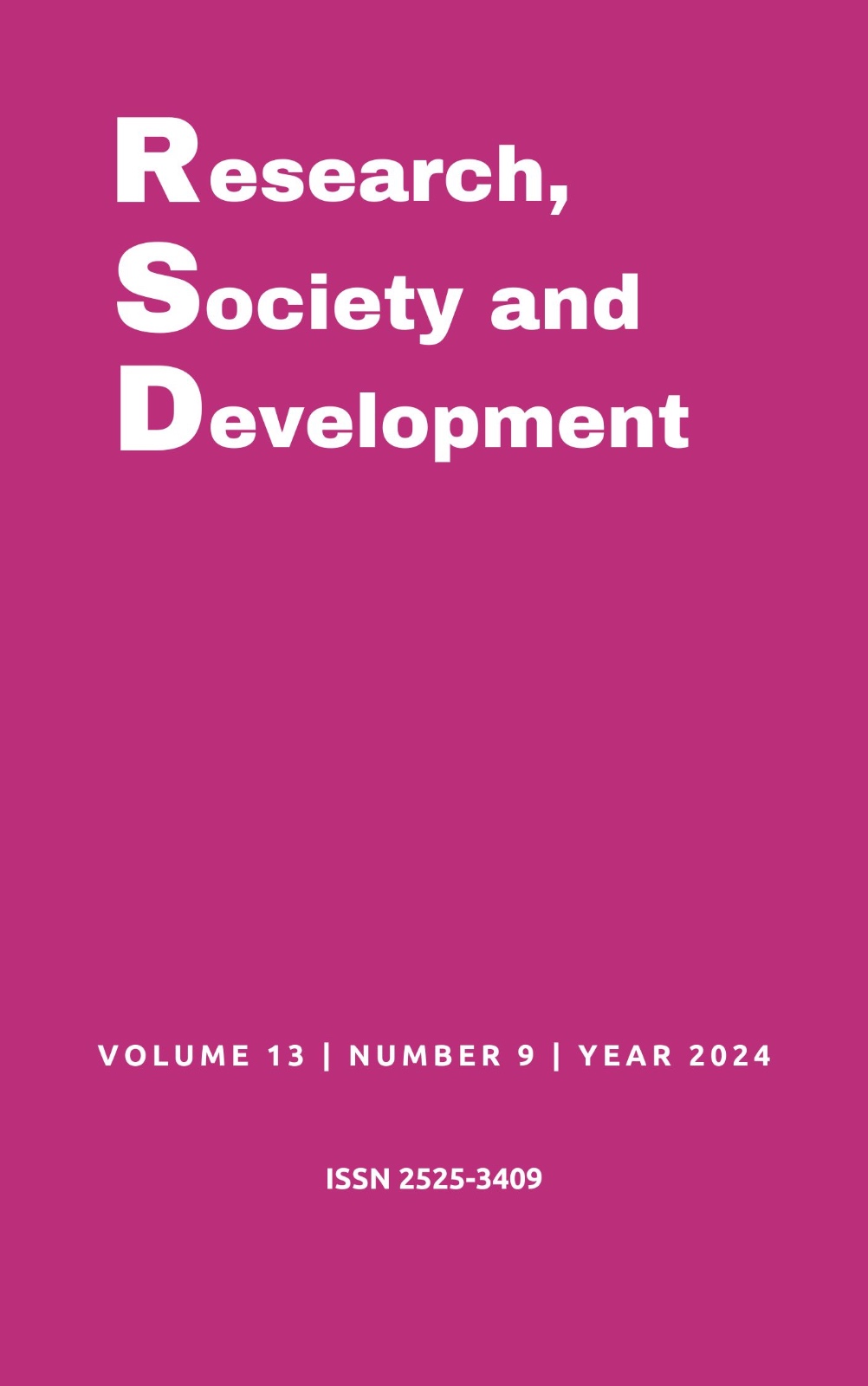Medidas de tensão interfacial de lubrificantes com maior adesão às superfícies metálicas
DOI:
https://doi.org/10.33448/rsd-v13i9.46609Palavras-chave:
Viscosidade, Lubrificantes, Molhabilidade, Tensão superficial, Superfícies metálicas.Resumo
O intuito inicial deste trabalho foi estudar a tensão superficial e a viscosidade de óleos e de misturas de óleos visando desenvolver um estudo sobre a miscibilidade desses lubrificantes. Ao fazer os testes descritos, pouca variação foi obtida inviabilizando tal estudo. Nessas condições, optou-se apenas por investir no que já seria a segunda etapa do trabalho: investigar a interação desses óleos e das misturas dos mesmos com uma determinada superfície metálica, visando assim, correlacionar a molhabilidade do óleo na superfície com a eficiência de lubrificação do mesmo. Para isso, foram utilizados dois óleos e três misturas dos mesmos, totalizando cinco amostras. Como resultado final, obteve-se a maior molhabilidade, numa superfície de alumínio, para a mistura 50-50, denotando, assim, que a mesma possuía maior interação com a superfície metálica e, teoricamente, uma maior eficiência de lubrificação. A eficiência citada seria maior desde que os outros componentes dessa mistura não apresentassem uma incompatibilidade muito grande. Evidentemente, a análise química demandada para sanar tal preocupação foi deixada como sugestão para trabalhos futuros.
Referências
ASTM D6185. (2017). Standard practice for evaluating compatibility of binary mixtures of lubricating greases. Astm.org. https://www.astm.org/d6185-11r17.html
Azevedo, J. B., Carvalho, L. H. d., & Fonseca, V. M. (2004). Propriedades reológicas de óleos lubrificantes minerais. 3° Congresso Brasileiro de P&D em Petróleo e Gás, Instituto Brasileiro de Petróleo e Gás - IBP (pp. 1-5).
Blair, G. P. (1990). The basic design of two-stroke engines. Society of Automotive Engineers.
Bretas, R. E. S., & D'Ávila, M. A. (2005). Reologia de polímeros fundidos (2nd ed.). EdUFSCar.
Castrol. (2019). Ficha técnica Stihl 8017 H. <https://encurtador.com.br/MUH8K>. Acesso em: 12 abr 2020.
Garandet, J. P., Vinet, B., & Gros, P. (1994). Considerations on the pendant drop method: A new look at Tate's law and Harkins' correction factor. Journal of Colloid and Interface Science, 165, 351-354.
Guerra, P. H. L. (2015). Como funcionam os motores 2 tempos. <https://educacaoautomotiva.com/2015/09/09/como-funcionam-os-motores-2-tempos/>. Acesso em: 09 mar 2020.
Huhtamäki, T., Tian, X., Korhonen, J. T., & al. (2018). Surface-wetting characterization using contact-angle measurements. Nature Protocols, 13(7), 1521–1538. doi:10.1038/s41596-018-0004-2
Jing, J., Yin R., Zhu, G., Xue, J., Wang, S., Wang, S., (2019). Viscosity and contact angle prediction of low water-containing heavy crude. Journal of Petroleum Science and Engineering, 112, 1-14. doi: 10.1016/j.petrol.2019.02.022
Luz, J. A. M., Souza, I. A. M., (2014). Propriedades de óleos empregados em flotação. HOLOS, 3(Edição Especial - XXV ENTMME / VII MSHNT), 227-233.
Neto, J. A. (1985). A indústria de máquinas agrícolas no Brasil - origens e evolução. Revista de Administração de Empresas, 25(3), 57-69.
Pérez, T. G. (2010). Estudo da influência do plasma de baixa pressão no comportamento mecânico das uniões adesivas metalborracha. Campinas, SP: [s.n.].
Pilling, S. (2019.). Prática 5 – Tensão Superficial de Líquidos. Notas de Aula - Físico-Química Experimental I, Volume UNIVAP, 1-8. https://www1.univap.br/spilling/FQE1/FQE1_EXP5_TensaoSuperficialGota.pdf
Rudawska, A. E. (2019). Mechanical treatment. In Surface Treatment in Bonding Technology (pp. 87-128). Academic Press.
Santos, A. E. R. (2016). Mecânica de motores de popa: dois e quatro tempos. SENAI-SP Editora.
Schulz, J., Brinksmeier, E., & Meyer, D. (2013). On the interactions of additives in metalworking fluids with metal surfaces. Lubricants, 1(2), 75-94. doi:10.3390/lubricants1020075
Shugarman, A. (2021). Managing the risk of mixing lubricating oils. Machinery Lubrication, 9. https://www.machinerylubrication.com/Read/235/mixing-lubricating-oils
Vieira, T. R., Pizarro, R. A., & Barbosa Jr, J. R. (2013). Análise experimental da molhabilidade do óleo. Anais do CREEM 2013, XX Congresso Nacional de Estudantes de Engenharia Mecânica (pp. 1-2).
Worley, J. D. (1992). Capillary radius and surface tensions: Using calculations based on Tate’s law. Journal of Chemical Education, 69(8), 678. doi:10.1021/ed069p678
Young, T. (1805). An essay on the cohesion of fluids. Philosophical Transactions of the Royal Society of London, 95, 65-87.
Downloads
Publicado
Edição
Seção
Licença
Copyright (c) 2024 Kauan de Oliveira Machado; Lays Camila Matos; Gustavo Henrique Denzin Tonoli; Alfredo Rodrigues de Sena Neto; César Augusto Gonçalves Beatrice; Ricardo Vitor Ribeiro dos Santos; Pedro Henrique Alves Bittencourt Santos; André Luís Marcomini

Este trabalho está licenciado sob uma licença Creative Commons Attribution 4.0 International License.
Autores que publicam nesta revista concordam com os seguintes termos:
1) Autores mantém os direitos autorais e concedem à revista o direito de primeira publicação, com o trabalho simultaneamente licenciado sob a Licença Creative Commons Attribution que permite o compartilhamento do trabalho com reconhecimento da autoria e publicação inicial nesta revista.
2) Autores têm autorização para assumir contratos adicionais separadamente, para distribuição não-exclusiva da versão do trabalho publicada nesta revista (ex.: publicar em repositório institucional ou como capítulo de livro), com reconhecimento de autoria e publicação inicial nesta revista.
3) Autores têm permissão e são estimulados a publicar e distribuir seu trabalho online (ex.: em repositórios institucionais ou na sua página pessoal) a qualquer ponto antes ou durante o processo editorial, já que isso pode gerar alterações produtivas, bem como aumentar o impacto e a citação do trabalho publicado.


